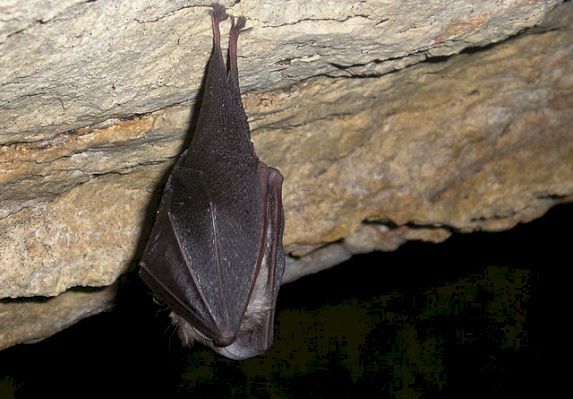Lesser Horseshoe Bat
Picture Resource: By Falcoperegrinus (Matthieu Gauvain) - Own work, CC BY-SA 3.0, Link
Systematic (order, family) – Chiroptera, Rhinolophidae
Description – This is the smallest horseshoe bat found in Palestine. It has soft, fluffy grey-white fur on the underside and brownish fur on top. While resting, it wraps its wings around its body as it hangs upside down. The young are dark grey. The outer ears are longer than the head and the horseshoe nose covers most of its face. It has a slow and low flight.
Distribution in the country and worldwide – They are distributed through central, southern and Western Europe but its population is severely declining. It also occurs throughout regions of north and east Africa, and from Palestine in the western Asia to Kashmir in the east.
Habitat – They can be found in sheltered valleys, mixed woodlands and hedgerows. Typically, roosts are in caves, though maternity roosts also occur in old buildings, often in warm attics. Hibernation takes place underground in caves, mines and cellars.
Behavior – They tend to sleep alone or in small flocks. They are nocturnal and roost in caves, ruins and tunnels. They are insectivorous, mainly feeding on moths, spiders, and flies. While hunting, they fly fast close to the ground around bushes and shrubs. They pick their prey off of stones and branches. In the autumn, they are gain fat and hibernate between September and May.
Breeding/mating (season, how and where) – Mating occurs in the autumn and pregnancy lasts seven weeks. The females gather in mixed-sex maternity colonies and give birth to one young between mid-June and the beginning of July. The young become independent at 6-7 weeks.
Weight and size – body length: about 3.5 cm, tail length: about 2.2 cm, weight: approximately 3-4 g.
Threats and hazards – Disturbance and destruction of roosts have caused a big decline in this bat’s population. Also, increased use of insecticides, which reduces prey availability, and loss of suitable foraging habitat are major risks to this species.
Cool facts – Rhinolophus means in Greek 'nose crest', and hipposideros means 'horse-iron' or horseshoe. It refers to the bat's complex nose, which is believed to serve as an 'acoustic lens', focusing echolocation pulses that are emitted from the nose.
Conservation status – Least Concern

